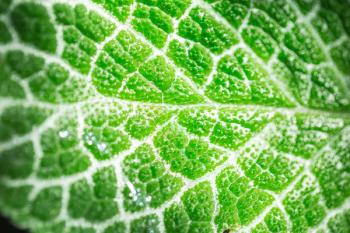
Recycling of Construction Waste with Near-Infrared Spectroscopy
A recent study examined how near-infrared (NIR) spectroscopy can estimated the water content in recycled construction materials.
Near-infrared (NIR) spectroscopy can be used to estimate the water content in recycled aggregates, which can improve the recycling process for construction materials, according to a recent study published in Construction and Building Materials (1). As a result, the effect is that the environmental impact of these processes is reduced.
Construction and demolition waste (CDW) is the debris that is generated during the construction, demolition, and renovation of infrastructure projects, such as roads, bridges, and highways (2). They often contain materials such as metals, plastics, glass, bricks, wood, and asphalt (2). According to the U.S. Environmental Protection Agency (EPA), 600 million tons of CDW was generated in the United States in 2018, which is twice the amount of municipal solid waste (2). This figure is only expected to climb as more infrastructure projects are needed because of population increases.
As a result, recycling CDW takes on increased importance, not just for the economy but for the environment. Doing so allows us to preserve finite natural resources, reduce the exploitation of raw materials, and cut down on greenhouse gas emissions (1). However, a significant challenge has been ensuring that recycled construction materials meet the same quality standards as new materials, while avoiding the negative effects of downcycling, where materials are reused in lower-grade applications (1).
Recently, Ina Reichert and the team at the Materials Research and Testing Institute Weimar in Germany used near-infrared (NIR) spectroscopy to estimate the water content in recycled aggregates. The key obstacle to reusing CDW at the same quality level as the original material is the difficulty in classifying and sorting the waste, as well as removing impurities. One critical factor is the quantification of water content in the recycled aggregates (1). The precise water content must be known to properly calculate new concrete mixtures and ensure the material maintains its strength and durability (1).
The team explored a novel method using spectral data from the visual and infrared region to estimate water content. The research examined whether NIR spectroscopy, with wavelengths ranging from 1000 nm to 2300 nm, could be used to measure the water content in various CDW materials (1). These materials under study were concrete, autoclaved aerated concrete, lightweight concrete, brick, roof tiles, calcium silicate bricks, and gypsum.
Through 63 measurement series, the researchers conducted reflection measurements on CDW material samples to establish a mathematical relationship between the spectral data and water content (1). For the experiments, they utilized the Agilent Cary 5000 UV-vis-NIR spectrometer, which operates across a wide wavelength range from 200 nm to 2500 nm, encompassing the ultraviolet (UV), visual (vis), and NIR regions of the light spectrum (1).
The researchers found that the accuracy of water content estimation depended heavily on the type of material being measured. However, even with some variability, NIR spectroscopy proved to be a reliable method for estimating water content, particularly when additional material properties, such as density, volume, and porosity, were considered (1). Among the methods tested, the absorption difference method, which only requires two spectral values, emerged as the most efficient (1). This method minimizes experimental effort, reduces computational costs, and requires less data storage and transfer (1).
By utilizing cameras with only two NIR channels, the method the researchers demonstrated in their study could be applied to conveyor belt systems, allowing for rapid and accurate water content estimation as materials move through the sorting process (1). This speed and efficiency could significantly enhance recycling operations, especially when high precision is not required.
However, the authors state in their study that more research is necessary to fully understand the influence of other factors, such as material density, texture, and aggregate size, on water content estimation (1). Although the initial findings demonstrate the feasibility of NIR spectroscopy for this purpose, future studies will aim to refine the technique and expand its applicability.
References
- Reichert, I.; Linß, E. Water Content Estimation of Recycled Building Materials Based on Near-infrared Spectroscopy. Constr. Build. Mater. 2024, 412, 134827. DOI:
10.1016/j.conbuildmat.2023.134827 - U.S. Environmental Protection Agency, Sustainable Management of Construction and Demolition Materials. EPA.gov. Available at:
https://www.epa.gov/smm/sustainable-management-construction-and-demolition-materials (accessed 2024-09-17).
Newsletter
Get essential updates on the latest spectroscopy technologies, regulatory standards, and best practices—subscribe today to Spectroscopy.





